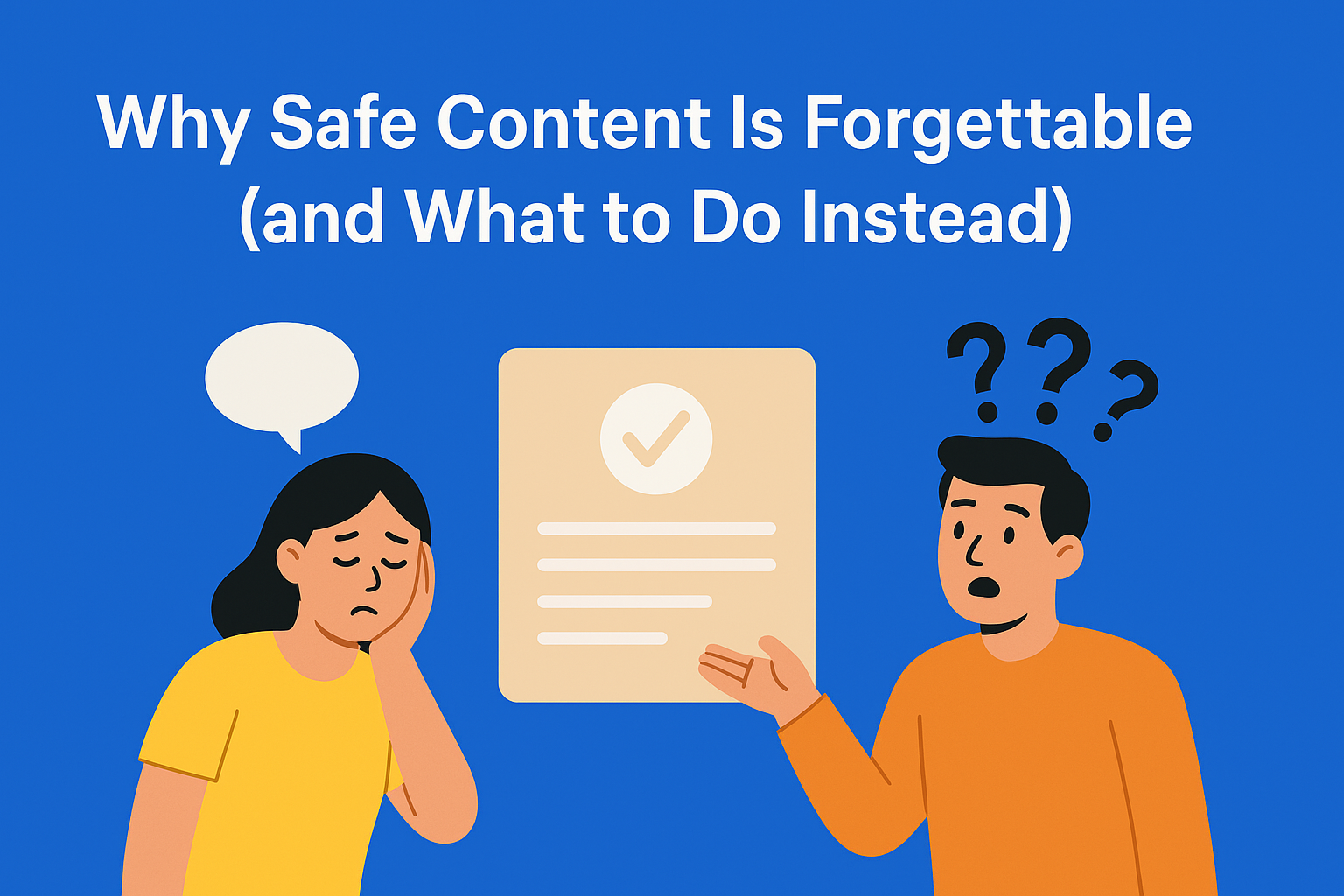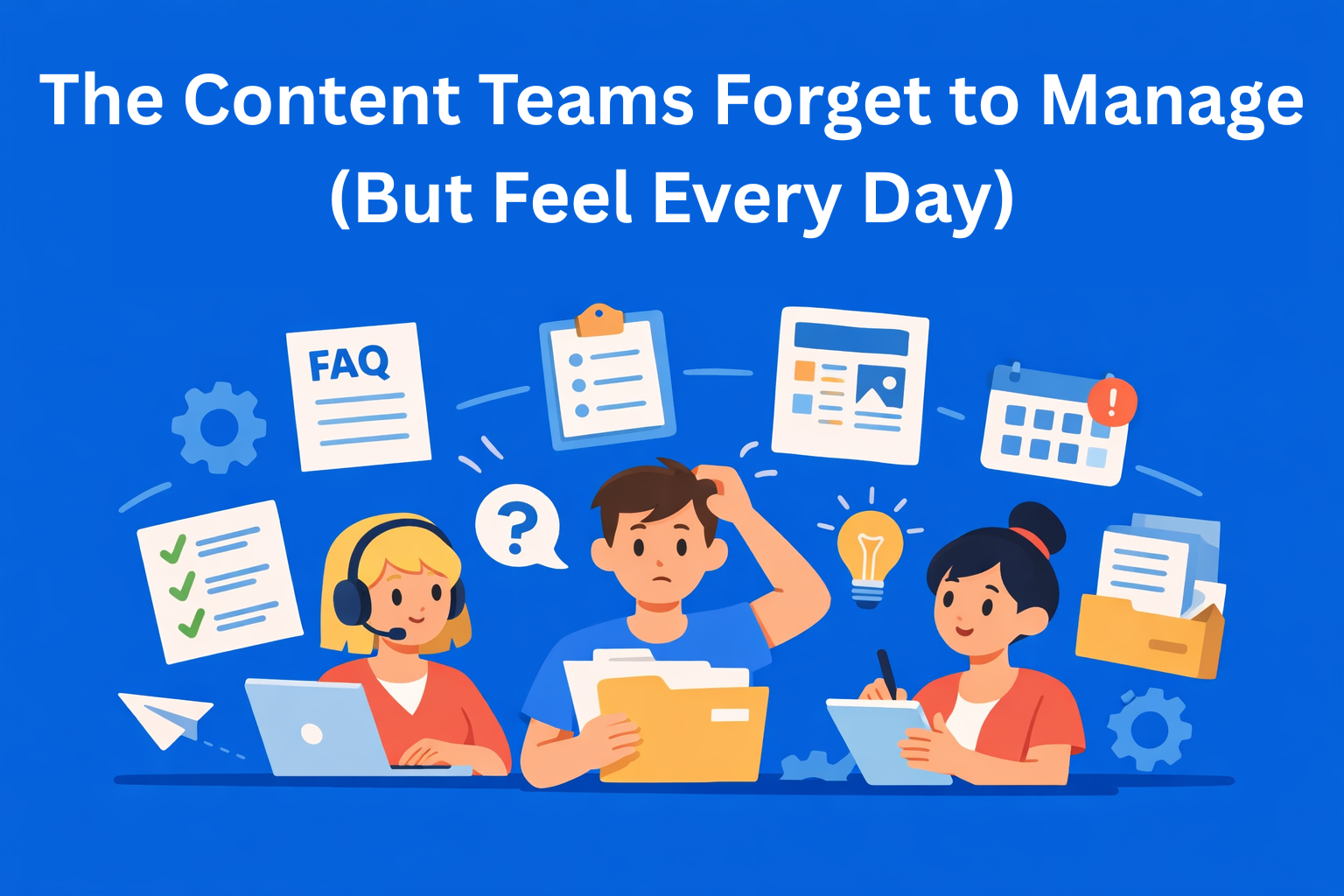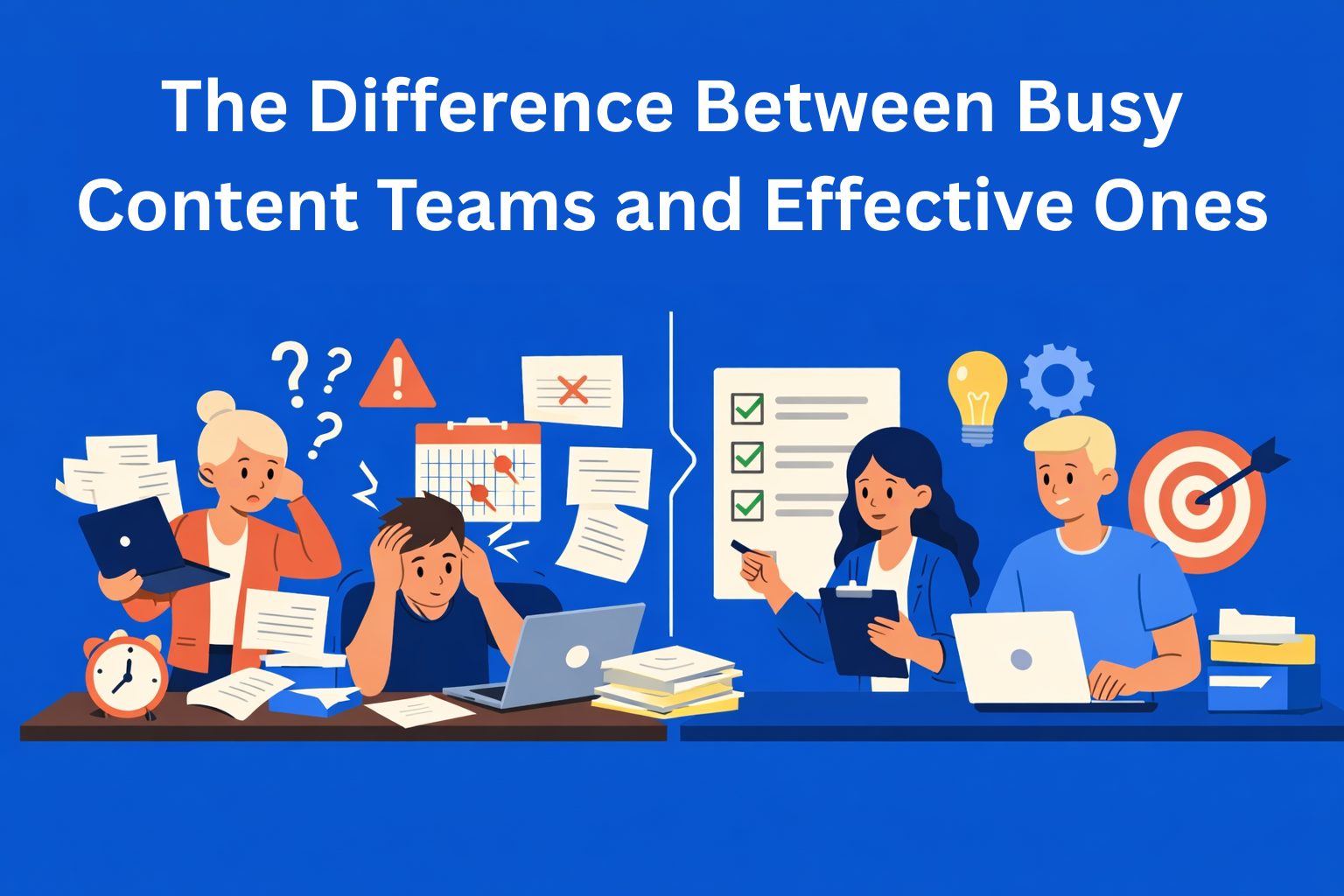If Nobody Disagrees With Your Content, It’s Probably Forgettable
If your content is so safe that no one could disagree with it, it’s forgettable. Memorable content takes a clear position - not to provoke, but to actually say something worth responding to.

There’s a particular type of content that looks polished, professional, and… completely invisible.
The kind that slides past your feed without friction.
The kind nobody responds to - not with excitement, not with critique, not with anything at all.
It’s the content designed to please everyone.
And content that tries to please everyone usually ends up pleasing no one - because it never actually says anything.
Key Takeaways
- Safe content becomes invisible - when you try to please everyone, your message loses its edge and fades into the background.
- Clarity beats controversy - you don’t need to provoke; you need a clear, confident point of view that invites real engagement.
- Fear and over-editing dilute ideas - chasing consensus turns strong messages into bland, forgettable statements.
- Bold content takes a stand - memorable brands speak from experience and aren’t afraid to show what they believe in (and what they don’t).
- EasyContent sharpens team voice - built-in templates and collaborative workflows help refine ideas without watering down their impact.
Safe Content Isn’t Memorable
You can always tell when a piece of content has been sanded down too much.
- The language gets softer.
- The point of view gets foggy.
- The message evaporates into generalities like “brands should inspire connection” or “consistency is key.”
These are statements no one could possibly disagree with - because they don’t really mean anything. They’re true in the way fortune cookie wisdom is true.
If your message could comfortably sit on a corporate motivational poster, it’s probably not strong enough to stick.
Disagreement Isn’t the Goal - Clarity Is
We’re not talking about being provocative for attention. Manufactured controversy is cheap and tiring.
This is about having a view - a perspective shaped by experience, practice, and thought. A real point of view does a few things:
- It distinguishes you from everyone else saying the same thing.
- It gives your audience something to react to (agree or disagree).
- It shows you actually believe something about your field.
If your content has stakes, then disagreement becomes possible - and that’s a sign you’ve said something specific enough to matter.
Why Most Teams Water Down Their Message
A few patterns cause this:
Approval by committee
The more people who need to sign off, the more the message gets diluted.
Fear of “being wrong”
Teams worry that committing to a perspective means being held to it forever.
Desire to sound universally appealing
But universal appeal produces universal blandness.
The instinct is understandable - nobody wants backlash. But silence is also backlash. It’s just quieter.
Strong Content Takes a Position
A position can look like:
- A belief about how to do something well
- A critique of a common industry habit
- A principle you use to make decisions
- A line you don’t cross, even when others do
The clarity of the stance is what people remember.
For example:
- “Most teams don’t need more ideas - they need fewer ideas and better execution.”
- “If your copy needs explaining, it isn’t a good copy.”
- “Overproducing content usually means under-clarifying strategy.”
Not shocking. Not dramatic. But precise - and therefore discussable.
How to Add Friction Without Being Loud
You can sharpen your content without being combative. Try these moves:
1. Replace general claims with pointed ones
Instead of “Consistency matters,” try “If your message changes every month, your audience never learns who you are.”
2. Say what you don’t believe
Sometimes clarity is easier from the negative space.
3. Show the trade-offs
Memorable content acknowledges that choosing X means not choosing Y.
Specificity is what sparks recognition - or disagreement. Both are better than being ignored.
Where EasyContent Supports This Work
Taking a stance doesn’t mean being reckless - it means being intentional. EasyContent helps teams clarify their viewpoint before it gets shared.
With:
- Custom content templates that include fields for “Core Argument” and “Point of View”
- Review workflows that ensure disagreement sharpens the message, rather than watering it down
- Centralized collaboration that keeps discussion tied to the draft rather than scattered across Slack
Teams refine their stance - not erase it.
You don’t lose voice. You refine it into something sharper and more usable.
Conclusion
Content that’s impossible to disagree with is also impossible to remember. If there’s no tension (no angle, no position, no “here’s what we actually think”), your message dissolves into background noise.
Good content doesn’t require aggression, shock value, or picking fights.
It simply requires saying something real enough that someone could say, “I see it differently.”
Neutral content is forgettable.
Specific content is memorable.
Say it clearly enough that it could be disagreed with - that’s when it starts to matter.






